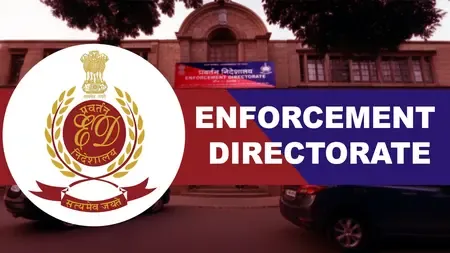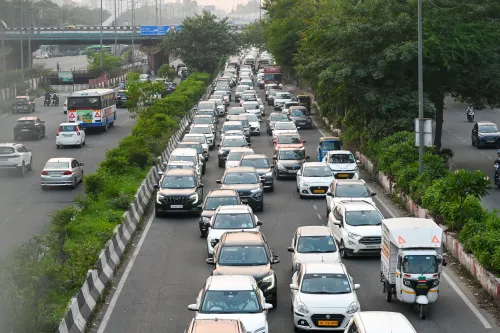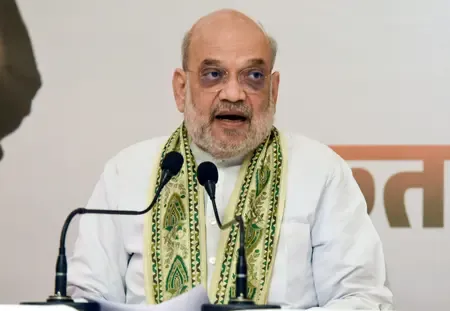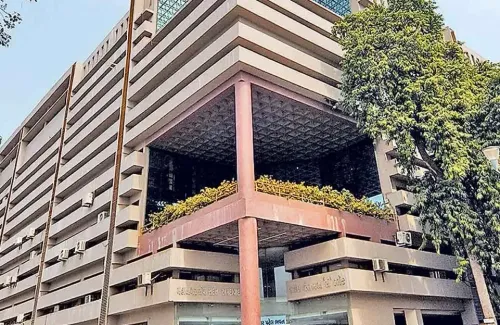What Key Projects Did NMCG Approve for Ganga Rejuvenation?
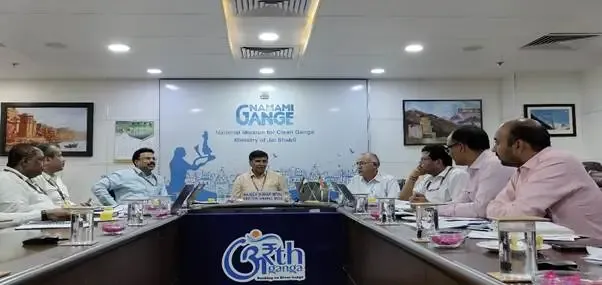
Synopsis
Key Takeaways
- NMCG approved projects focusing on ecosystem restoration.
- Emphasis on wetland conservation and sustainable practices.
- Funding allocated for capacity building in water-sensitive cities.
- The Namami Gange Programme recognized globally.
- Strategic decisions aim for a cleaner and healthier Ganga.
New Delhi, May 6 (NationPress) In a noteworthy advancement towards comprehensive river and environmental restoration, the 62nd Executive Committee (EC) Meeting of the National Mission for Clean Ganga (NMCG), presided over by Rajeev Kumar Mital, Director-General of NMCG, concentrated on sustainability in river revitalization.
During the meeting, the conservation of vital wetlands and the promotion of treated wastewater reuse through specific city plans were key topics of discussion. The Committee sanctioned projects that are in harmony with the mission's goals of ecosystem restoration throughout the Ganga basin.
It’s important to highlight that the Namami Gange Programme (NGP) has been acknowledged as one of the Top 10 Global Restoration Flagship initiatives by the UN Decade (UNEP and FAO).
In another significant decision, the Committee approved the project titled ‘Conserving and Sustainably Managing Nathmalpur Bhagad (Wetland) in Bhojpur District, Bihar’, with an estimated budget of Rs 3.51 crore. This marks the fifth wetland initiative under NGP, aiming to implement an effective management strategy for Nathmalpur Bhagad.
This project emphasizes integrating biodiversity and ecosystem service values into the planning of river basin conservation and development. A dual approach is proposed, including interventions at the sub-basin (Ghaghara, Gomti and Sone confluence) and site levels (Nathmalpur Bhagad), covering activities such as wetland delineation, enhancing hydrological regimes, species and habitat conservation, ecological assessments, risk evaluations, capacity building, outreach, and monitoring mechanisms to ensure the long-term health and sustainability of the wetland ecosystem.
Previously, four wetlands were also approved for conservation: Kalewada Jheel, Muzaffarnagar, UP; Namiya Dah Jheel, Prayagraj, UP; Reoti Dah Wetland, Ballia, UP; and Udhwa Lake (Ramsar Site) Sahibganj, Jharkhand, under the Namami Gange initiative.
Additionally, the Committee allocated Rs 34.50 lakh for the ‘Capacity Building Initiatives for Creating Water-Sensitive Cities in the Ganga Basin’ project, aimed at developing city plans and providing training on the reuse of treated wastewater for Agra and Prayagraj districts in Uttar Pradesh. This initiative seeks to align city-level reuse plans with the National Framework for Safe Reuse of Treated Water (SRTW) developed by NMCG.
“The approval of these projects reiterates NMCG’s commitment to integrated water management and environmental restoration. As the Mission progresses, such strategic decisions will play a crucial role in realizing the vision of a cleaner, healthier, and more sustainable river ecosystem for future generations,” stated the Ministry of Jal Shakti.
The meeting was attended by notable figures including Mahabir Prasad, Joint Secretary and Financial Advisor of the Ministry of Power (additional charge), River Development and Ganga Rejuvenation, Ministry of Jal Shakti; Nalin Srivastava, Deputy Director General of NMCG; Anoop Kumar Srivastava, Executive Director (Technical); Brijendra Swaroop, Executive Director (Projects); S.P. Vashistha, Executive Director (Administration); Bhaskar Dasgupta, Executive Director (Finance); Prabhash Kumar, Additional Project Director of Uttar Pradesh SMCG; and S. Chandrasekhar, I.F.S., Chief Conservator of Forest -cum- State Nodal Officer, Environment and Climate Change, Bihar.

